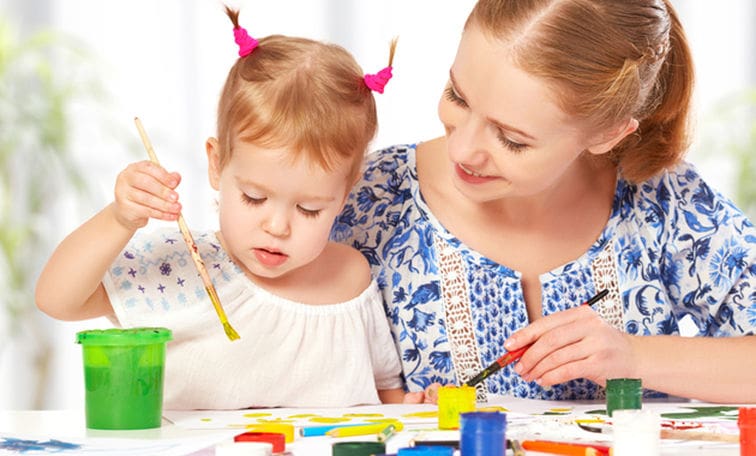
Teaching your toddler about shapes and colors is an important step in their early development, because it helps them to define and organize much of the world they see around them. Whether your child is looking at a rectangular building, a circular plate, a green tree or a blue sky, being able to recognize shapes and colors is a vital component of their cognitive development, and it will establish a strong foundation for subsequent educational concepts such as math and logic. Although no one doubts the importance of teaching colors and shapes, many parents have questions regarding when and how to introduce these concepts. Below are some tips and ideas regarding which time frames and methods are most useful for teaching your toddler about colors and shapes.
Teaching Colors: When and How
It is important to remember that each child is different, so there’s really no one specific developmental timeline that will work for all children. Generally speaking, 18 months is a great time to begin teaching your child about colors, but it’s not uncommon for children between 2 to 3 years old to be in the beginning stages of learning these concepts. Regardless of when you start, it is important for you to review colors with your child on a regular basis, even up to kindergarten age. Here are some simple activities you can try to help reinforce concepts of color:
* Name that color: Colors are everywhere, so this game is very easy to play. Simply point to an object, name what color the object is, and then ask your child to find something else that has that same color. For example, you might say, “I see a red truck over there. Can you find something else that’s red?” Or, if you’re walking through a crowded parking lot, ask your child, “Which car on this row is blue?”
* Any experiments with food coloring are always a smash hit. You can take some recyclable water bottles, fill them with water and then ask your child to add a few drops of a particular food coloring to the bottle. Experiment with color mixing as well – e.g., allow your child to make green water by combining drops of yellow and blue food coloring in a bottle.
* Kirstylee Moody, author of the popular early childhood educational blog Moms Have Questions Too, has put together an excellent (and exhaustive!) resource for teaching colors to your child at this link.
Teaching Shapes: When and How
The most prevalent age for teaching kids shapes is around 2 years old. By the time your child is 2 1/2 or 3 years old, they should be able to identify the majority of basic shapes (e.g., circle, square, triangle, and rectangle). From there, you can move on to more advanced shapes (e.g., diamond, heart, star, oval, etc.). Here are some simple yet highly effective activities you can use to help your child learn shapes:
* Shape sorting games: You can transform simple household items into learning tools by allowing your child to sort them into various groups based on their shape. Start out with a pile of objects on the floor, and then encourage your child to sort them into separate piles based on shape (e.g., round, rectangular, square, etc.).
* Help your child draw shapes using finger paint, or by drawing in sand. Guide his/her hand as they draw the shape, making sure to emphasize the name of the shape over and over again as he/she completes the drawing. You can also draw the same shape in different sizes, so that you can help your child differentiate between a “big” circle and “small” circle, for example.
* Go for a shape walk around your neighborhood, or at a local park. Bring a small cardboard cutout of each shape, so that your child can compare it to what they see around them. They might notice that the triangular rooftops of some of the houses match their triangle cutout, or that the manhole cover on the street matches their circle cutout. Whenever your child finds a new shape, make a tally mark on the respective cardboard cutout to keep track of his/her discoveries.
Your child will interact with shapes and colors all throughout their life. Keep the above ideas and tips in mind to help them get a good head start on these fundamental concepts!

